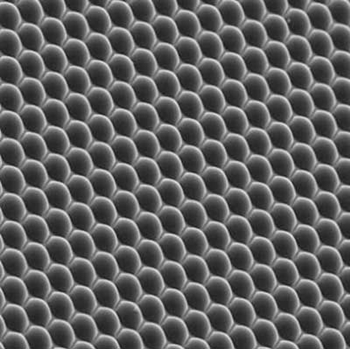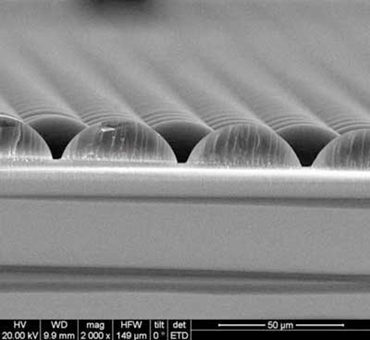|
NOVIDADES
Researchers at KTH Royal Institute of Technology developed technology to tap into infrared light for solar energy conversion and increase solar cell efficiency by 10 percent or more. Invisible infrared light accounts for half of all solar radiation on the Earth’s surface, yet ordinary solar energy systems have limited ability in converting it to power. A breakthrough in research at KTH could change that. A research team led byHans Ågren, professor in theoretical chemistry at KTH Royal Institute of Technology, has developed a film that can be applied on top of ordinary solar cells, which would enable them to use infrared light in energy conversion and increase efficiency by 10 percent or more (Nanoscale, "Microlens array enhanced upconversion luminescence at low excitation irradiance").  A close up of the film which combines nanocrystals and microlenses to capture infrared light and convert it to solar energy. Image: KTH
Photosensitive materials used in solar cells, such as the mineral perovskite, have a limited ability to respond to infrared light. The solution, developed with KTH researchersHaichun LiuandQingyun Liu, was to combine nanocrystals with chains of microlenses.  A close up of the film which combines nanocrystals and microlenses to capture infrared light and convert it to solar energy. Image: KTH
KTH The Royal Institute of Technology. Accessed: Nov 05, 2019. |
|||||||||||||||||||||||||